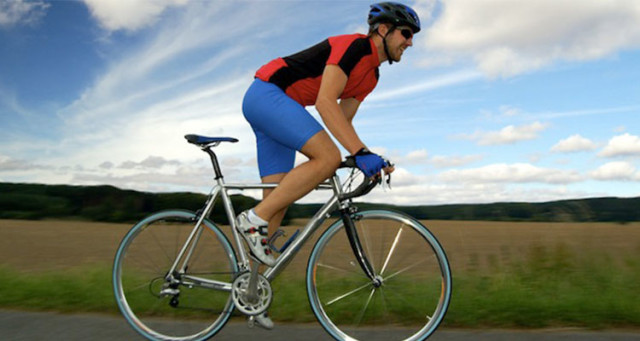Obviously, the question should be seen as part of the race. First, we analyze the main differences between the effort of the cyclist and runner who competes at distances typical of the middle-distance extended.
1.) Strength – While cycling you are using up to 60% of the maximum force in the race, ranging from a 20% (marathon) to a maximum of 30% (5000 m). The data are mean of course, but the individual deviations are quite small.
2.) The anaerobic component – is much lower in cycling, getting to be almost nothing if the path is flat, and the effort is not maximal. In the race can only be negligible in the marathon.
3.) The muscular districts – Obviously are involved in a different manner, so much so that, in part dimensions, also the conformation of the musculature of the lower limbs is different in a cyclist in a pure and pure runner.
4.) The muscular effort – In the race the eccentric component of movement is crucial.
5.) Consumption – In the race depends only on mileage, especially in cycling intensity of the effort.
These points are enough to make people understand that the two sports are very different. To give an answer to the initial question you need to define a session that can be an ideal workout for the ride.
Combining step 1 and step 5 it can be deduced that cycling from the point of view of strengthening is excellent, but if the force decreases too much is consumed and there is very little in training. So the first rule: The effort must be 90% of the ceiling.
Bike and run workouts milder continue to have a value enhancer for the ride (and thus can still be useful in the rehabilitation), but they are aerobically significant, taking into account that the time available to an amateur is not usually ” professional. ”
Introducing this concept it can be said that aerobically cycling effort is approximately one-third of that of the race. That is : The duration of the session should be three times that of the stroke.
So a session of two hours is equivalent to a session of the bottom slow 40. It seems little, but the reality is this (the rest is enough to consider the lengths of cycling races).
With regard to points 3 and 4, you cannot do anything if you do not distinguish between the two conditions in which the bike is used:
- In rehabilitation from injury. In this case, the runner does not run. If rehabilitation is very long (at least a month) definitely lose the athletic race and will return to re-educate the musculoskeletal system. In this case, the cycling should be coupled to the water ride to speed up the recovery.
- How parallel training. The runner is in full swing and use the bike as a complementary training. If the system can run away from competition (strengthening and unloading of the musculoskeletal system), not good in the season. Continuous messages in contrast confuse the body, and excessive muscular effort can lose brilliance.
Point 2 is the most critical. If you reduce a lot of the anaerobic component, the bike is substantially reduced at a session of the bottom of slow (not so long for the usual time constraints).. The inclusion of climbs, strokes applied at the maximum speeds, etc…. are essential to maintain the value of the bike workout.











